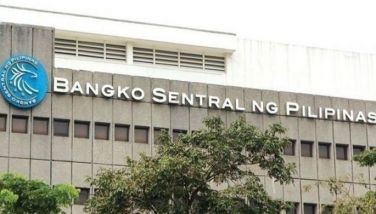Musings in New York
NEW YORK CITY – During my visit to this American city, I gained new and valuable lessons and insights that I will take home with me. While this place still has its iconic charm, it cannot be denied that New York has become drastically advanced in many aspects over other cities, particularly in the field of energy.
As someone who has worked for decades in the Philippine energy industry, I find it second nature to be interested in the energy profile of the different places I travel to.
After all, the worsening impact of climate change has imposed upon all countries the need to accelerate the transition to cleaner energy sources for sustainable energy security.
This is a well-recognized priority of the Philippine government, with President Ferdinand Marcos Jr. himself emphasizing the need for energy security as one of the key agendas of his administration.
During this trip, I realized that New York’s diverse energy profile can serve as a model for countries like the Philippines, as we strive to achieve a more sustainable energy future.
New York has heavily relied on natural gas, hydropower, and nuclear energy to power the city over the last decade, according to the US Energy Information Administration (EIA).
These energy sources have provided the city with an effective mix for decarbonization and given the state a pragmatic approach to reducing carbon emissions without sacrificing economic stability and development.
New York, after all, has maintained its position as the premier financial hub of the United States.
Data from the US EIA show that energy-related carbon dioxide emissions in New York have been consistently lower than in other American states – highlighting the effectiveness of its balanced and diverse energy supply mix.
To support its clean energy transition, New York law requires 70 percent renewable electricity by 2030 and 100 percent carbon-free electricity from both renewable sources and nuclear energy by 2040.
The state has long laid down plans to achieve this target—with natural gas and nuclear energy playing key roles in this significant shift.
Natural gas, for example, has emerged as a key fuel in the transition from coal to cleaner, renewable energy sources. According to data from the EIA, in 2022, natural gas-fired power plants accounted for almost three-fifths of New York’s generating capacity and 47 percent of New York’s total electricity generation. By providing the city with a cleaner fuel option, natural gas has helped drastically reduce the overall greenhouse gas emissions of New York.
Nuclear energy, on the other hand, powers around 21 percent of New York’s electricity generation—providing a stable and clean source. While often vilified in debates and discussions over safety, nuclear energy has consistently been crucial in ensuring a stable power supply in New York.
In the case of the Philippines, the New York model offers valuable lessons as we chart our own path toward a sustainable energy future.
Natural gas can serve as a transition fuel to reduce carbon emissions as the Philippines ramps up investments in renewable energy infrastructure. President Marcos himself noted during the US-ASEAN Business Council that while the transition to renewables is vital, it won’t be simple and must be approached realistically.
In the long term, nuclear energy offers the Philippines a reliable, stable, and clean option for power supply to transition away from fossil fuels. Adopting nuclear technology can largely address energy security and environmental concerns.
Thankfully, the Philippines has already taken steps to accelerate our path toward a sustainable energy future.
Just late last year, the Philippines signed a civil nuclear cooperation deal, or the 123 Agreement, with the United States for the possible integration of nuclear energy into our supply mix. The Department of Energy (DOE) likewise established a dedicated nuclear energy division within the agency, tasked with the promotion, development, and implementation of plans and activities that aim to expand nuclear energy utilization in the Philippines.
In parallel, the private sector is actively supporting the government’s energy security initiatives. For instance, Meralco, the Philippines’ largest distribution utility, has partnered with US-based Ultra Safe Nuclear Corp. (USNC) to explore the adoption of nuclear technologies in the country. After completing a pre-feasibility study, the company is now evaluating the safety, financial viability, and criteria for selecting this technology.
Aside from this, Meralco is also set to send its initial batch of engineer scholars overseas to facilitate learning about nuclear energy under the Filipino Scholars and Interns on Nuclear Engineering or FISSION program. Upon completion of the two-year program in the United States and China, the scholars will be sent to nuclear technology companies for their internships, and they will be reintegrated with Meralco and assigned to take on roles in its nuclear power generation unit when they return to the Philippines in 2028.
Moving forward, lessons from New York’s energy strategy offer key insights as we carve our own path toward achieving energy security without hurting the economy.
- Latest
- Trending





























